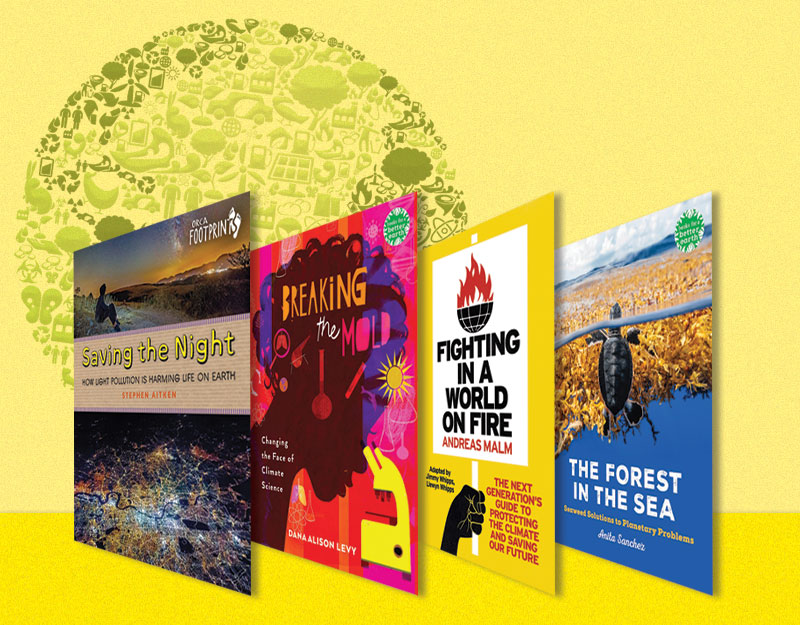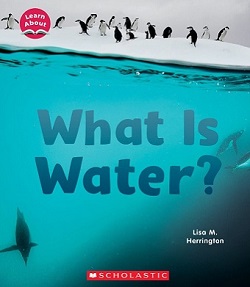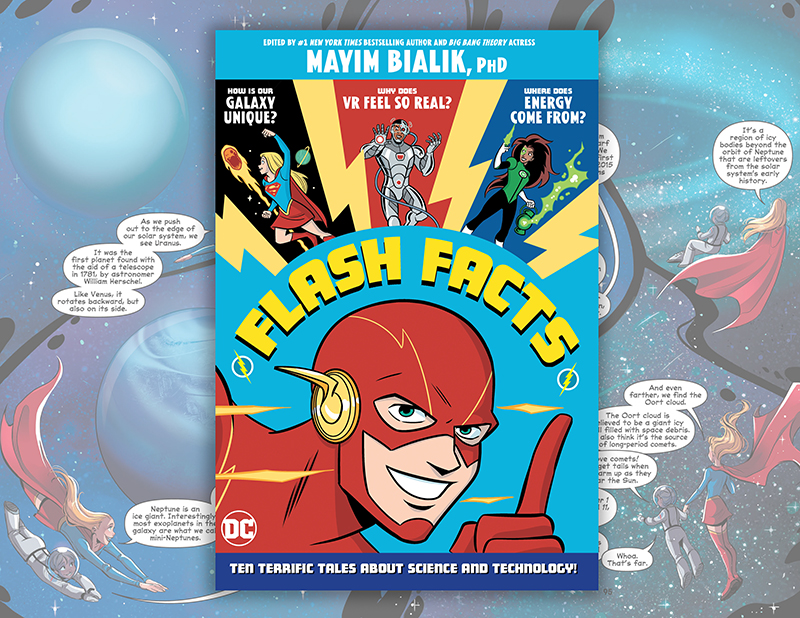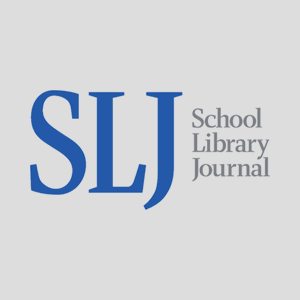Imagine! and Imagine

Imagine!
Illustrated by Raúl Colón
Published by Paula Wiseman/Simon & Schuster 2018
ISBN #978-1-4814-6273-0
Book Review
A boy’s first encounter with modern art is chronicled in this inviting wordless picture book by renowned artist Raúl Colón. Leaving his Brooklyn home, the boy skateboards across the Brooklyn Bridge, following a pigeon he spots in the sky above. When that pigeon lands in front of the Museum of Modern Art, the boy ventures inside and is immediately enthralled by what he sees. And it isn’t long before his imagination is ignited and the subjects of several famous works of Post-Impressionist, Fauvist, and Cubist art step out of their frames to encourage his newfound delight and inspire a life of creativity within him. Using watercolors, lithograph, and colored pencils, Colón creates double-page, full-page, and paneled scenes of vibrant color and energy. In an author’s note, Colón relates the autobiographical underpinnings of this tale—“Even though I was an adult, I reacted like a child. The emotions I felt were overwhelming—” and his hopes that the youth who read this book will have a similar experience—“Maybe their minds will explode and fireworks will go off and floodgates will open, creating sparks that lead them to their own revelations like mine did.” Imagine! is not just a breathtaking work of narrative and illustrative art; it is an exuberant invitation for readers to seek and experience wonder and possibility in their lives.

Imagine
Written by Juan Felipe Herrera
Illustrated by Lauren Castillo
Published by Candlewick Press, 2018
ISBN #978-0-7636-9052-6
Book Review
“If I grabbed a handful/of words/I had never heard and/sprinkled them over a paragraph/so I could write/a magnificent story,/imagine”. These lines are just a sample of the stirring verse penned by former U. S. Poet Laureate Juan Felipe Herrera in his picture book, Imagine. Herrera reminisces about his childhood as the son of farmworkers, his move to the city with “a new concrete school/I had never seen,” and his growing sense of the power of words and music. For each memory, he provides a short, strikingly evocative poem on a double-page spread, punctuated by the refrain, “Imagine,” and invites readers to do just that. Lauren Castillo’s pen and foam monoprint illustrations support a sense of nostalgia, blending hazy landscapes with clearly outlined people and objects to mimic a child’s memory of past events. Simply put, this is a stunning work of literature, art, and imagination that belongs in every classroom bookshelf, and a beautiful invitation for readers to imaging the possibilities in their own lives.
ADVERTISEMENT
ADVERTISEMENT
Teaching Ideas and Invitations
Grades PreK and up
- Just Imagine. After reading these books, play the song “Imagine,” by John Lennon and share some other books about imagining, wishing, and dreaming, such as Yuyi Morales’s Dreamers. Set aside some time for students to engage in imagining—for wonder and celebration (as in Raúl Colón’s book), for hope and possibility (as in Juan Felipe Herrera’s book), or for other reasons they may come up with. You might want to encourage them to take note of what they imagine during times and places ripe for imagining: at recess, at the playground, at bedtime, etc. Ask them to represent what they imagine in the modality that best showcases their strengths, such as art, writing, music, or technology. Host a publishing party in which students share what they imagine with peers, family, and community members.
- The Power of Imagination. Enlist the help of your school or local librarian to gather a text set of picture books that support these two books in exploring the power of imagination and what is possible when imagination is valued. Some possible titles include Matt De La Pena’s Carmela Full of Wishes, Bill Thompson’s Chalk, Candace Fleming’s Papa’s Mechanical Fish, Philip C. Stead’s Ideas are All Around, and Kobi Yamada’s What Do You Do With an Idea? Help students discuss ways in which imagination can become reality. What qualities or attributes must one exhibit in order to make ideas, hopes, and dreams come true? How do the characters in these books exhibit those qualities? What ideas, hopes, and dreams do your students have that could realistically be pursued—perhaps as a class project or in pairs or small groups?
- Reasons for Imagining. Although both books have the same title, they each take a different approach to imagining. What role does imagination and imagining play in these books? What role does imagination and imagining play in your students’ lives? What role do they play in your students’ learning and your teaching? Meet with grade level colleagues and administration to discuss the benefits of imagining and supporting it throughout the school curriculum and year. You might want to share this article with your students and/or this one with your colleagues to foster discussion.
Grades 2 and up
- More about the Art. The characters that join the protagonist in Raúl Colón’s Imagine! are from iconic works of art. Invite students to embark on an inquiry about these works: Icarus, by Henri Matisse; The Sleeping Gypsy, by Henri Rousseau; and Three Musicians, by Pablo Picasso. What inspired the artists to create these pieces? What artistic media was used? What artistic techniques did the artists use? When were they created, and where are they located now? Why do they think these pieces became iconic items in both the art world and popular culture? You might want to share some picture book biographies about these artists, such as Colorful Dreamer: The Story of Artist Henri Matisse, by Marjorie Blain Parker; Henri’s Scissors, by Jeanette Winter; and The Fantastic Jungles of Henri Rousseau, by Michelle Markel.
- Mentor Text for Poetry: Pivotal Moments. In the stanzas that comprise his poem, Juan Felipe Herrera describes moments in his youth that were pivotal for imagining new possibilities, such as the time he “let tadpoles/swim across my hands/in the wavy creek,” and the time he “opened/my classroom’s wooden door/not knowing how to read/or/speak in English”. Have students brainstorm similar moments in their lives thus far that could have led to different possibilities. Using Imagine as a mentor text, have students weave these moments into a poem about imagining.
- Pairing Art for Story. In his author’s note, Raúl Colón explains he selected Icarus, The Sleeping Gypsy, and Three Musicians “because I felt they represented what would work best for this particular story.” With the help of your school or local librarian, gather a set of fine art resources (e.g., books, websites, databases, etc.) to share with students. Give students time to explore a variety of fine art—paintings, sculptures, drawings, etc.—with the goal of identifying a handful of pieces that could be put together to tell similar stories, or different parts of the same story. As Colon did in Imagine!, have students draw or write a story involving the main subjects of the art and then share those stories with the class. Another book to share is World Make Way: New Poems Inspired by Art from The Metropolitan Museum of Art, edited by Lee Bennett Hopkins, which centers on poetry inspired by fine art. You might want to work with a local art museum or community artists for this project as well.
- Mentor Text for Poetry: Precise Words and Figurative Language. Juan Felipe Herrera uses precise words and figurative language throughout his poem. Help students do a close reading of the text, noting how those language choices enhance the content of his poem. Have students identify the lines they like best, making sure they explain how the words and language in those lines make them feel and what they make them think. Then, have them try writing their own poetry emulating what they like in Herrera’s poem.
- Author Study. Juan Felipe Herrera is a prolific poet, having published several works over the years and rising to the honor of U.S. Poet Laureate from 2015-2017. Gather a collection of his work and biographical information, including interviews and videos. Read through his poetry collections as a class, noting similarities and differences across their formats and styles. Take a close look at his writing techniques, noting his word choices and use of figurative language. Ask your students to identify patterns in topic, theme, poetry format, and figurative language across his work. Compile a list of writing lessons and strategies gained from this author study and invite your students to try out some of the writing techniques you have discussed in their own writing.
- Illustrator Study. Focusing on either Raúl Colón or Lauren Castillo, survey the artist’s illustrations, and identify his/her artistic style, artistic idiosyncrasies, and favorite artistic media to use. What techniques does s/he employ? What themes or symbols do they see across his/her illustrations? Gather a collection of the illustrator’s work and biographical information, including interviews and videos such as those listed below, with the help of your school or local librarian.
Further Explorations
Websites about Raúl Colón
https://www.nccil.org/artists/raul-colon
http://www.simonandschuster.com/authors/Raul-Colon/706247
http://www.morgangaynin.com/artists/colon/
Websites about Juan Felipe Herrera
https://www.loc.gov/rr/program/bib/herrera/
https://www.poetryfoundation.org/poets/juan-felipe-herrera
https://www.poets.org/poetsorg/poet/juan-felipe-herrera
Lauren Castillo’s website
http://www.laurencastillo.com/
Museum of Modern Art
https://www.moma.org/collection/works/80172 – The Sleeping Gypsy
https://www.moma.org/collection/works/78630 – Three Musicians
https://www.moma.org/collection/works/105386 – Icarus
Books
De La Pena, M. (2018). Carmela full of wishes. Ill. by C. Robinson. G. P. Putnam’s Sons.
Fleming, C. (2013). Papa’s mechanical fish. Ill. by B. Kulikov. Farrar, Straus, & Giroux.
Hopkins, L. B. (Ed.) (2018). World make way: New poems inspired by art from the Metropolitan Museum of Art. Abrams Books for Young Readers.
Markel, M. (2012). The fantastic jungles of Henri Rousseau. Ill. by A. Hall. Eerdman’s Books for Young Readers.
Morales, Y. (2018). Dreamers. Neal Porter/Holiday House.
Parker, M. B. (2012). Colorful dreamer: The story of artist Henri Matisse. Ill. by H. Berry. Dial.
Thompson, B (2010). Chalk. Two Lions.
Winter, J. (2013) Henri’s scissors. Beach Lane.
Yamada, K. (2014). What do you do with an idea? Ill. by M. Besom. Compendium.
Filed under: Fiction, Fiction Picture Books, Picture Books, Poetry, Poetry Picture Books
About Grace Enriquez
Grace is an associate professor of language and literacy at Lesley University. A former English Language Arts teacher, reading specialist, and literacy consultant, she teaches and writes about children’s literature, critical literacies, and literacies and embodiment. Grace is co-author of The Reading Turn-Around and co-editor of Literacies, Learning, and the Body.
ADVERTISEMENT
ADVERTISEMENT
SLJ Blog Network
The Moral Dilemma of THE MONSTER AT THE END OF THIS BOOK
Cover Reveal and Q&A: The One and Only Googoosh with Azadeh Westergaard
K is in Trouble | Review
Fighting Public School Book Bans with the Civil Rights Act
ADVERTISEMENT








Dear Ms. Enriquez,
I like the way you combined ideas for the classroom with these wonderful books. Thank you!
P.S. My maiden name is Enriquez 🙂